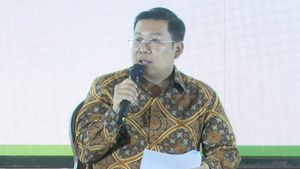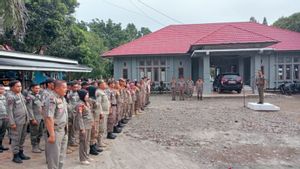JAKARTA - The opportunity for the growth of the poultry industry in the future is still considered quite prospective. The Institute Development of Economics and Finance (Indef) considers that there are four problems found from the study conducted. One of them is the problem of supply and demand imbalance.
Indef economist Enny Sri Hartati said the study conducted by Indef was motivated because the poultry industry has a very strategic role. But unfortunately there are still problems that must be resolved.
First, supply and demand imbalance. Enny said, there are two quite important problems here, namely the determination of DOC production is not based on final demand and demand instability.
"Regarding the determination of DOC production, it is not based on final demand, because that is what we are dealing with living things. So if we plan to hatch a group, all of them haven't hatched the tengu. April.
Enny said, the poultry industry is different from an inanimate industry, where the raw materials and the amount of production are quite clear. Meanwhile, the poultry industry due to living things in the middle of the road has its pluses and minuses. Including cultivation.
"So that the decision to decide on a DOC product should really have one measurable indicator," he explained.
Regarding instability in demand, said Enny, the policy that must be taken is to increase the growth of poultry consumption. You do this by formulating the needs of chicken meat and the production of its derivatives.
"Increasing promotion and awareness for poultry protein. Improving distribution of poultry meat and production of its derivatives. And improving cold chain facilities," he said.
Second, feed instability. Enny said, the problem faced is the availability of raw materials for animal feed. Therefore, it is necessary to provide policies for the supply of raw materials for animal feed that are sufficient and efficient.
"The strategy can be recalculated corn demand, increasing domestic maize production," he said.
Then, said Enny, it could also be issued by issuing policies on incentives for corn farmers. You do this by providing support for corn seed subsidies and fertilizers. Apart from that, it could also be done by developing an off-taker institution for stabilizing the price of maize.
"Sources of animal feed protein outside soybeans have not been optimally utilized. Policies that need to be made are the provision of alternative domestic protein raw materials," he said.
There are two strategies that can be implemented, said Enny, to increase alternative feed raw materials and support research on alternative raw material sources for poultry feed.
Not only that, high logistics costs are also a problem in the instability of poultry feed. So a policy is needed to streamline the logistics costs of corn production centers to the center of the feed industry.
"The strategy is to develop sea toll roads in corn production centers and encourage feed factory interventions in chicken production centers," he said.
Third is the competitiveness of poultry products. Enny said, there are three problems related to this. Starting from value chain integration and modernization of the poultry industry, diplomacy and trade negotiations, and complexity based on market structures.
"The strategy to increase competitiveness is by incentives to increase the modernization and scale of animal husbandry production based on biosecurity and animal welfare by the central and local governments," he said.
Then, the ease of importing feed raw materials for exporters of poultry and their processed products. Finally, incentives for the use of close house technology and investment incentives for livestock technology.
In addition, said Enny, the government also needs to issue a policy to increase Indonesia's bargaining position in the WTO regarding poultry. This can be done with two strategies, namely the strategy of bartering for feed raw materials and market access and accelerating the G2G process.
Regarding the problem of complexity based on market structure, said Enny, the policy that can be taken is to create a just market structure. You do this by implementing a strategy to regulate the quantity and quality as well as the DOC of feed and the number of cages. Then adjust the quantity of broiler and layer products in harmony. Also, regulations that require chicken meat that is slaughtered in RPHU and has an NKV certificate.
Finally, the issue of data and information availability. The problem faced is regarding the assumptions of production and consumption that are not appropriate. This can be overcome by a policy of providing data and information in a transparent, timely and independent manner
Strategies that can be implemented include the mandatory data reporting mechanism in the poultry supply chain, creating an independent data and information management agency, and building a data and information management system that is transparent and accessible.
The English, Chinese, Japanese, Arabic, and French versions are automatically generated by the AI. So there may still be inaccuracies in translating, please always see Indonesian as our main language. (system supported by DigitalSiber.id)













